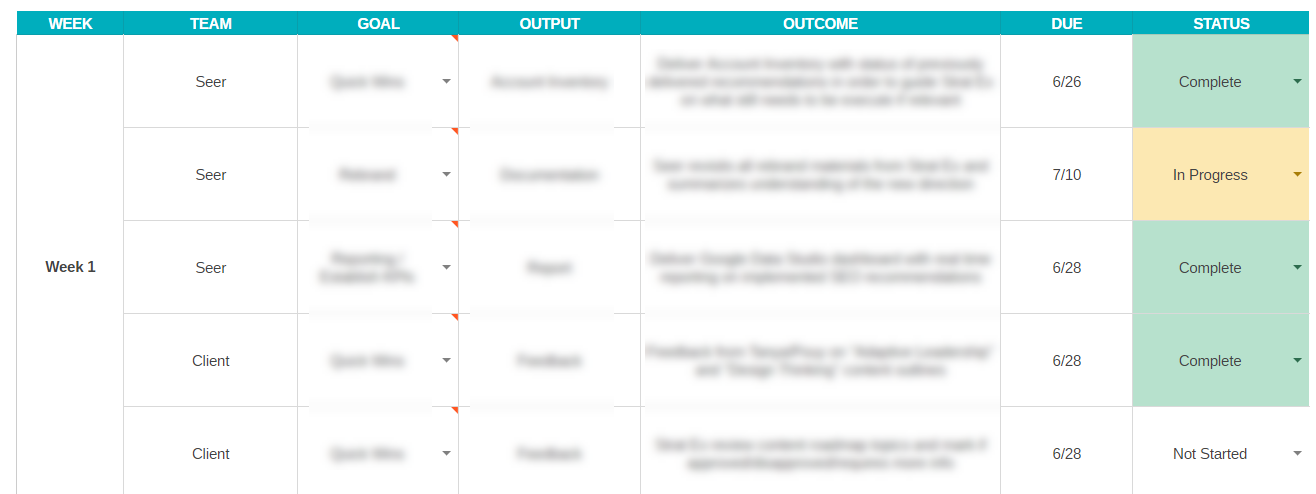There’s one thing about agencies I can guarantee - clients come and go. It’s not good, it’s not bad, it just is. Sometimes the stars just don’t align: budgets change, new CMOs have a new vision, companies get acquired, vendors get consolidated, the list is a mile long.
I think Bert Cooper from Mad Men said it best: “I don't want to have to walk down here every time we lose an account. This is an advertising agency. I'll wear out the carpet.”
However, I’ve seen some of our best partnerships be born out of strife and hardship. So before you let a client say goodbye, follow these three steps.
Step 1: Investigate
No matter the reason for why your client is leaving, it will benefit all of you if you have a better understanding of the details that led them to this decision.
Set up a meeting
Don’t try to save a project through email. Schedule a face-to-face or a virtual video call with the client to get to the nuts and bolts of what they’re thinking about the project. Outline the goals you have for the meeting and the questions you want to ask. I suggest asking at least the following:
- What led to this decision?
- What did you like or dislike about our work?
- What can we do differently?
- How have your goals changed?
Create an Accusation Audit
If the reason for the client leaving has something to do with your team’s performance, an accusation audit might be helpful. Do a brain dump of all the possible criticisms the client could pose about the current project. Then write out your responses to each. It’s not about making excuses but rather having a solid response to move the project forward instead of further jeopardizing the state of the union.
Some accusations might be things like:
- The team doesn’t understand our industry
- I’m not seeing an ROI on this project
- We’re not moving fast enough
- I don’t have any budget
- We’re not being strategic enough
Get permission to pivot
If your client is serious about ending the working relationship, your goal for this meeting should be to get them to agree to hang on a bit longer. Now that you have a better understanding of the reasons they are leaving you can decide if the account is able to be saved and if it is, move to an action plan.
Step 2: Create an Account Action Plan
Now that you have a better understanding of your client’s expectations and their goals, it’s time to create a detailed action plan. This will be your roadmap of tactics for the next 30 to 60 days. Its goal will be to keep both your team and the client aware of our progress as you journey together to the new frontier.
What goes into the plan?
To be effective, each item of your action plan should answer the following questions:
- Who is responsible for completing this task? (specific name or even just you vs. the client)
- What goal does this action support?
- What is the output? (i.e. what is the literal deliverable and medium going to be)
- What is the outcome? (what will the result of this out be?)
- When is it due?
- What is the status?
For the actual format of the plan, I’m partial to Google Sheets. Yours might look something like this:

What do you do with the plan?
First, get the plan approved by your client. If you’ve got nodding heads from them and your team, then this plan is now a Project Management godsend.
For the next 30 to 60 days, this action plan is your bible. You bring it to every client call and it acts as your agenda. If you’re talking to the client about something not on this plan, something should feel off (ok fires happen but really there should be no major shifts in strategy outside of this plan if you’re doing it right).
Note: It’s a good idea to schedule a midway check-in or two with the client to confirm the plan still aligns with their goals.
Step 3: Conduct A Post-Mortem
Whether your plan saves the account or not you should set aside time to review the impact the plan had on the project. Ask these three questions:
- What worked, what didn’t?
- What goals were achieved?
- What would the next 30-60 days look like if we kept going?
That last question is important. If the client wants to keep things going, then you’re planning your next steps. If the client has one foot out the door, then at least you are showing them what they’d be missing out on.
I’m fortunate to work at Seer where we always choose to do right by our clients. So when I hear a client is opting to leave, I respect their decision, but I also let them know I wouldn’t be doing my job if I didn’t make them aware of what they were walking away from. Hopefully, these steps help you make your clients aware too.
We’re proud of the work we do whether clients have left us or not. They are on a journey just like we are. That’s why we still feature some past clients on our clients page.
If you’d like to work at an agency that approaches client relationships this way, check out our careers page for open opportunities.


